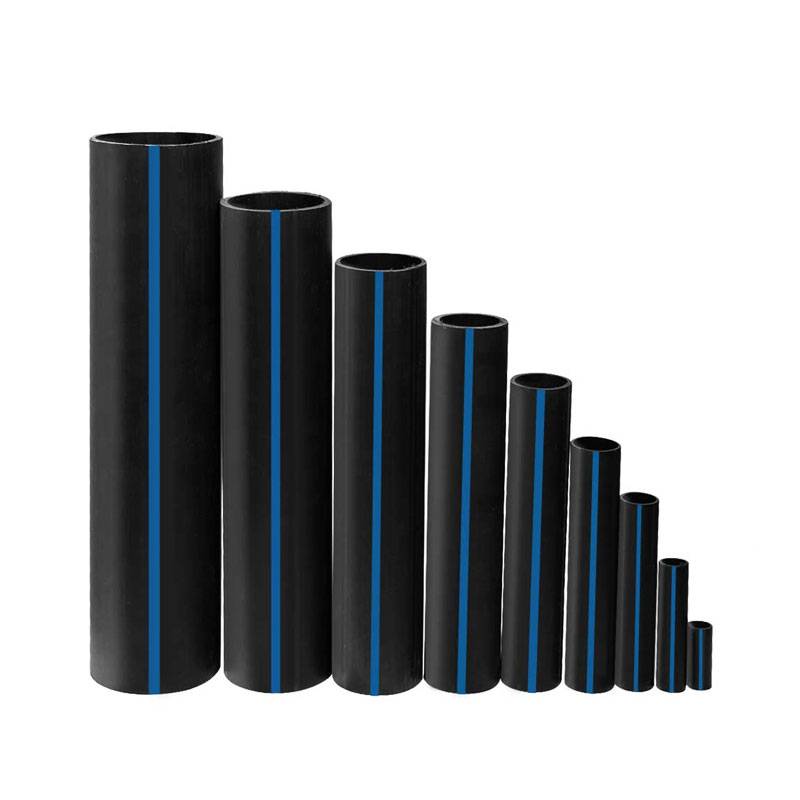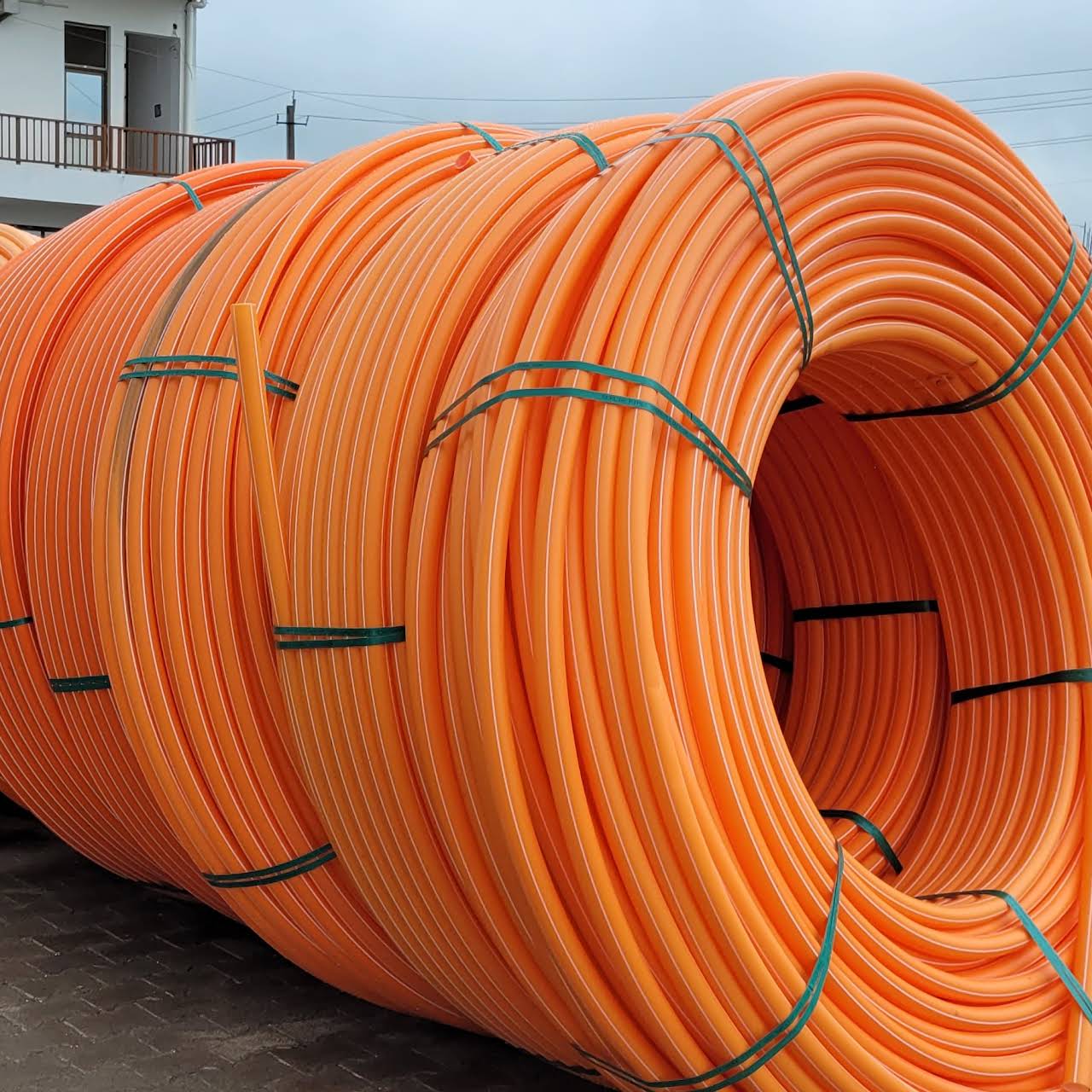Check Out the Manufacturing Process Behind High-Quality HDPE Pipe and Its Applications
The production process of premium HDPE pipelines is intricate and methodical. It begins with the selection of basic materials that improve efficiency. Following this, ethylene undertakes polymerization to create resin, which is after that formed via extrusion. Quality control is vital, ensuring that the final product fulfills rigid requirements. Nonetheless, the trip of HDPE pipes doesn't end with manufacturing. Their applications throughout various sectors disclose a broader importance worth taking a look at.
Recognizing HDPE: Qualities and Advantages

High-density polyethylene (HDPE) is a functional polycarbonate known for its sturdiness and resistance to numerous ecological aspects. This product displays outstanding tensile strength, making it appropriate for requiring applications. Its low-density structure adds to a light-weight product, promoting simplicity of dealing with and installation. HDPE additionally showcases impressive resistance to chemicals, which lessens destruction when revealed to harsh substances.
The product's reduced wetness absorption additionally improves its longevity, making it suitable for use in pipelines and storage containers. In addition, HDPE is resistant to ultraviolet (UV) radiation, guaranteeing that items keep their integrity even when revealed to sunlight. In addition, its versatility enables the development of intricate shapes without jeopardizing strength. The environmentally friendly nature of HDPE, often originated from recycled products, contributes to its appeal, advertising lasting practices in manufacturing. On the whole, these residential properties and advantages make HDPE a recommended option for various industrial and customer applications.
Raw Product Option for HDPE Production
The choice of basic materials for HDPE production is vital to verify the end product satisfies the preferred requirements and high quality requirements. High-density polyethylene (HDPE) is mostly produced from polymerized ethylene, stemmed from fossil fuels such as all-natural gas or unrefined oil. The top quality of these feedstocks substantially affects the mechanical and thermal residential properties of the final HDPE.
Ingredients likewise play a significant duty in boosting HDPE's performance, consisting of antioxidants, UV stabilizers, and colorants, which boost longevity and resistance to environmental variables. The selection procedure have to consider not only the chemical structure of the raw products however also their handling attributes to guarantee effective production.
The sourcing of raw products need to focus on sustainability and conformity with ecological laws, as accountable methods are vital in today's market. Eventually, careful raw product choice lays the structure for creating top quality HDPE pipelines ideal for diverse applications.
The Extrusion Refine: Forming HDPE Pipe
The extrusion procedure plays an important duty fit HDPE pipes, starting with careful product prep work methods that ensure suitable circulation and consistency. Equally important is the design of the die, which straight affects the last measurements and surface area top quality of the pipeline. With each other, these factors add significantly to the effectiveness and high quality of HDPE pipeline manufacturing.
Product Prep Work Strategies
Reliable manufacturing of HDPE pipes starts with precise product prep work techniques, especially the extrusion process. During this phase, high-density polyethylene resin is initial dried out to get rid of wetness, making certain optimal circulation qualities. The resin is then fed right into the extruder, where it goes through heating and melting, changing into a viscous state. This heating procedure is thoroughly controlled to maintain the product's integrity and performance. The liquified HDPE is forced through a die, shaping it right into a continual pipe form. Proper temperature level administration during extrusion is essential, as it directly affects the material's homes and the final product quality. When shaped, the HDPE pipe my blog is cooled and reduced to defined lengths, ready for succeeding processing and applications.
Die Design Value
Precision in die style plays an essential function in the extrusion process of HDPE pipelines. The die offers as the last shaping tool, directly influencing the pipe's dimensions, wall surface density, and surface area finish. A well-designed die assurances uniform material flow, lowering problems such as irregularities and weak spots. The geometry of the die have to be optimized to suit the details residential properties of HDPE, including its viscosity and thermal behavior throughout extrusion. Furthermore, the cooling rate of the product as it goes through the die can considerably impact the pipeline's structural stability. Subsequently, buying innovative die innovation is vital for suppliers intending to create top notch HDPE pipes that satisfy sector criteria and consumer assumptions.
Quality Assurance Actions in HDPE Production
Although different elements affect the quality of HDPE pipe manufacturing, reliable quality control procedures are vital to guarantee uniformity and dependability in the last product. Trick quality assurance techniques include extensive product assessment, validating that the raw polyethylene fulfills well-known criteria for pureness and thickness. Throughout the extrusion process, criteria such as temperature, stress, and cooling time are very closely kept an eye on to keep dimensional precision and structural integrity
Additionally, post-production screening is essential; suppliers usually conduct hydrostatic tests to assess the pipe's toughness and resistance to stress. Aesthetic inspections for surface area issues further boost high quality assurance. Certification from relevant standards organizations, like ASTM or ISO, supplies an additional layer of credibility. By applying these complete quality assurance measures, producers can reduce defects, enhance performance, and make certain that the HDPE pipes satisfy the specific requirements of different applications, ultimately resulting in consumer fulfillment and trust fund in the item.
Applications of HDPE Pipe Throughout Industries
HDPE pipelines are made use of throughout various fields because of their toughness and flexibility. look here In water distribution systems, they assure efficient distribution, while in wastewater management, they provide reputable solutions for waste transportation. Furthermore, farming irrigation networks gain from HDPE's resistance to deterioration and adaptability, making it an excellent choice for contemporary farming techniques.

Water Circulation Systems
A significant variety of industries rely upon high-density polyethylene (HDPE) pipes for effective water distribution systems. Known for their durability and resistance to rust, HDPE pipelines are extensively made use of in community water system networks, farming watering, and industrial applications. Their lightweight nature helps with very easy handling and setup, minimizing labor prices and time. In addition, HDPE pipelines can accommodate numerous stress levels, making them appropriate for both low and high-pressure systems. Midland TX HDPE Pipe Fittings in Stock. The versatility of the product permits for smooth integration right into existing facilities, minimizing the requirement for comprehensive excavation. HDPE's resistance to chemical leaching guarantees that the water supplied continues to be safe and clean, making it an ideal option for keeping the top quality of safe and clean water across different fields.
Wastewater Monitoring Solutions
Effective water distribution systems also lead the way for innovative wastewater administration options, where high-density polyethylene (HDPE) pipelines play a significant function. Renowned for their toughness and resistance to rust, HDPE pipelines are ideal for carrying wastewater in different setups. Their adaptability permits very easy installation in complex environments, lessening the requirement for comprehensive excavation. In addition, HDPE's smooth interior surface area lowers friction, improving circulation rates and effectiveness. These pipes are likewise immune to chemical leaching, ensuring that pollutants do not jeopardize the surrounding environment. Industries, municipalities, and treatment facilities progressively count on HDPE pipelines for their reliability and longevity, making them a favored selection for modern-day wastewater administration systems. This flexibility underscores the critical significance of HDPE pipes throughout countless applications.
Agricultural Irrigation Networks
Agricultural irrigation networks benefit greatly from using high-density polyethylene (HDPE) pipes, which supply effective and trustworthy water delivery to plants. HDPE pipes are light-weight, making them very easy to transfer and set up, while their versatility permits numerous setups in diverse terrains. These pipelines demonstrate exceptional resistance to rust, chemicals, and UV radiation, ensuring resilience in extreme farming atmospheres. Additionally, their smooth indoor surface area minimizes friction loss, maximizing water flow and decreasing energy expenses connected with pumping. The longevity of HDPE pipelines, frequently exceeding half a century, adds to decrease maintenance and substitute costs. Farmers increasingly count on HDPE pipelines to enhance irrigation performance and promote lasting agricultural techniques, eventually leading to improved crop yields and resource preservation.

Future Patterns in HDPE Pipeline Technology
As the need for lasting and effective infrastructure grows, improvements in HDPE pipeline innovation are positioned to change numerous markets. Arising trends consist of the assimilation of clever technologies, such as sensing units and IoT capabilities, which assist in real-time monitoring of pipeline problems, reducing maintenance prices and protecting against leakages. In addition, the growth of advanced production techniques, such as 3D printing, is enabling the manufacturing of complex, personalized pipe designs that deal with details project demands.
Furthermore, the concentrate on recycling and circular economy techniques is driving the technology of HDPE pipelines made from recycled materials, boosting sustainability. Improved jointing approaches, such as electro-fusion and mechanical installations, are likewise boosting installation efficiency and dependability. Lastly, the expanding emphasis on ecological policies is pressing suppliers to take on greener production processes, ensuring that HDPE pipelines not only fulfill sector criteria but likewise promote an even more lasting future for framework advancement.
Frequently Asked Concerns
Exactly How Does HDPE Compare to Various Other Plastic Products?
HDPE outmatches lots of various other plastic materials concerning resilience, chemical resistance, and adaptability. Its reduced thickness and high tensile toughness make it suitable for different applications, usually exceeding alternatives in both performance and durability.
What Are the Ecological Impacts of HDPE Manufacturing?
The environmental impacts of HDPE manufacturing consist of greenhouse gas emissions, energy intake, and potential contamination from manufacturing processes. In addition, incorrect disposal can cause dirt and water contamination, increasing issues regarding lasting environmental effects.
Can HDPE Water Lines Be Reused?
Yes, HDPE pipes can be reused. Numerous centers accept utilized HDPE for handling, transforming it right into brand-new items. This recycling contributes to sustainability initiatives, decreasing plastic waste while saving sources and power in the manufacturing cycle.
What Is the Life-span of HDPE Pipeline?

Exactly How Do Temperature Level Variations Affect HDPE Pipe Efficiency?
Temperature level variants substantially affect HDPE pipe efficiency, affecting versatility and strength. Heats can cause softening, while low temperatures may cause brittleness, inevitably affecting the pipe's sturdiness and viability for numerous applications in varied settings.